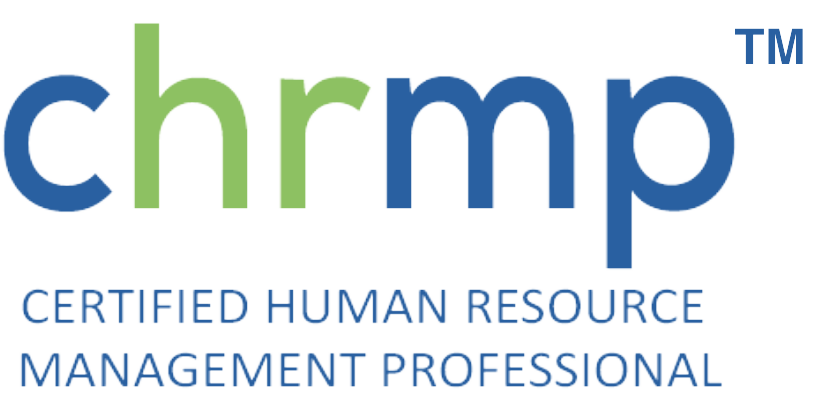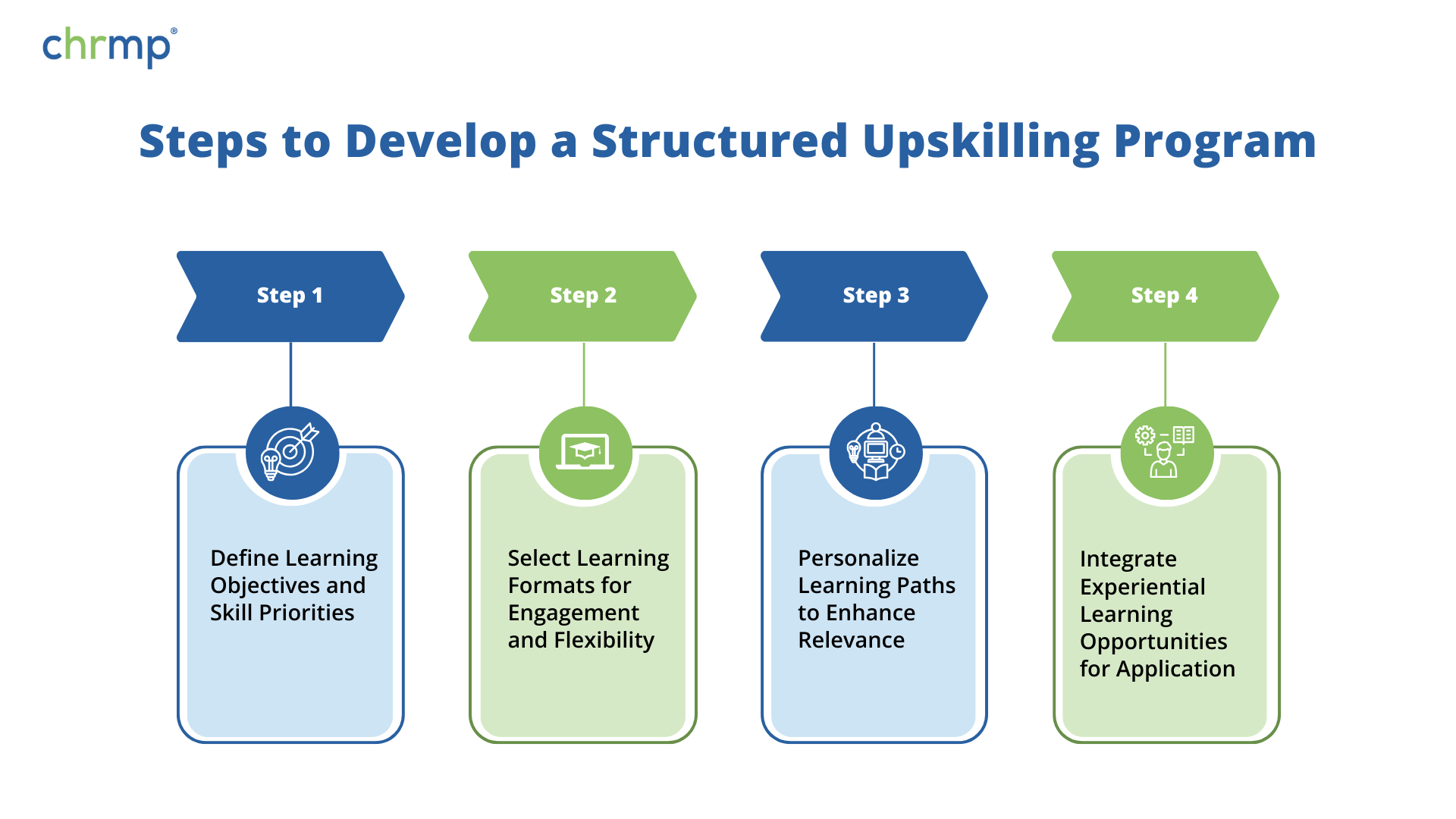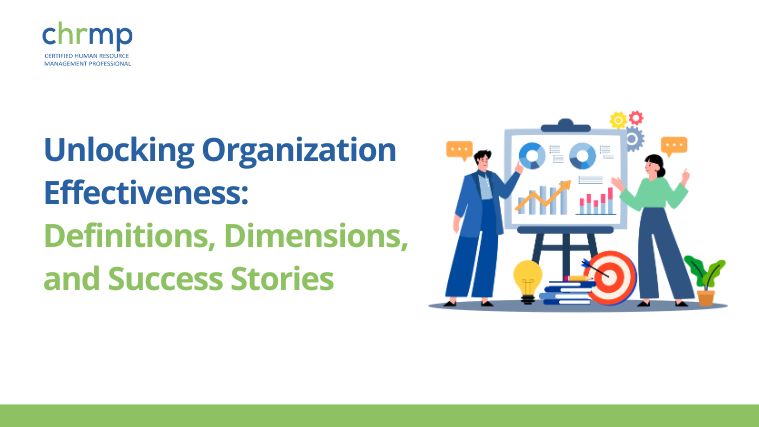Introduction: Why Upskilling Is a Strategic Priority
In the modern business environment, where technology and global competition drive constant change, upskilling your workforce has become a critical strategic imperative for sustainable success. Companies that prioritize upskilling in the workplace ensure their teams are adaptable, innovative, and well-prepared for future challenges. For HR leaders, understanding the significance of upskilling is essential for building a resilient, capable workforce that not only meets today’s demands but is also positioned to thrive in a rapidly evolving market.
Theoretical Base: Human Capital Theory
Human Capital Theory, first introduced by economist Gary Becker in the 1960s, underscores the importance of investing in employee skills, knowledge, and competencies. According to Becker, just as businesses invest in equipment and infrastructure to enhance productivity, they must also invest in their employees—who are, arguably, the organization’s most valuable assets. In HR terms, this theory implies that fostering workforce upskilling can increase the overall value of an organization, leading to improved productivity, innovation, and competitive advantage.
For HR professionals, Human Capital Theory provides a solid foundation for upskilling employees and planning employee upskilling programs. By viewing employees as assets with the potential for growth and development, HR teams can structure learning and development strategies that align employee competencies with company objectives. This theory highlights the need for HR to look beyond current skill sets and anticipate future skill requirements—fostering a proactive approach to upskilling the workforce that contributes to long-term organizational resilience.
With this understanding, HR leaders can strategically plan how to upskill employees by aligning their learning programs with company growth goals, developing a forward-thinking approach to upskilling the workforce, and positioning the organization to adapt to changes in the marketplace effectively.
The Benefits of Upskilling for Organizational Growth
The benefits of upskilling extend to both the organization and the individual, providing a win-win solution that strengthens the entire team. Below are some specific advantages of workforce upskilling, structured to highlight its multifaceted impact on both employees and employers:
Benefits of Upskilling for Employees
- Enhanced Job Satisfaction and Engagement: Employees who participate in upskilling programs tend to feel more fulfilled in their roles, as they recognize that the organization values their growth and development.
- Career Growth and Mobility: Upskilling creates new opportunities for career advancement, empowering employees to take on more challenging roles and potentially move up within the organization.
- Increased Confidence and Competence: As employees gain new skills, they become more confident in their abilities, which can enhance their performance and effectiveness on the job.
- Adaptability to Change: Upskilled employees are better equipped to handle evolving job demands, making them more resilient in the face of industry shifts or technological advancements.
Benefits of Upskilling for Employers
- Improved Retention Rates: Employees are more likely to stay with a company that invests in their development, reducing turnover costs and fostering a stable, engaged workforce.
- Enhanced Innovation and Productivity: As employees bring new skills to the table, they contribute fresh ideas and more efficient processes, boosting productivity across the organization.
- Reduced Recruitment Costs: By upskilling the workforce, organizations can fill new roles internally, saving time and resources that would otherwise go toward recruiting and onboarding external hires.
- Stronger Organizational Agility: Upskilled employees provide a versatile talent pool, allowing the company to respond quickly to changes and seize new opportunities without extensive restructuring.
Theoretical Base: Maslow’s Hierarchy of Needs
Maslow’s Hierarchy of Needs, developed by psychologist Abraham Maslow in the 1940s, presents a model of human motivation structured in five levels: physiological, safety, social (belonging), esteem, and self-actualization. The theory suggests that individuals are motivated to fulfill these needs in sequence, with self-actualization—reaching one’s full potential—as the ultimate goal.
In an HR context, upskilling plays a key role in helping employees achieve the higher levels of Maslow’s hierarchy, specifically esteem and self-actualization. When HR leaders implement employee upskilling programs, they address the “esteem” need by empowering employees with new skills, boosting their confidence and sense of achievement. At the same time, workforce upskilling enables employees to reach their potential, fulfilling their need for self-actualization.
HR professionals can apply insights from Maslow’s theory to create a supportive learning culture that encourages continuous growth, helping employees move up the hierarchy while contributing to a more engaged and committed workforce.
Identifying Upskilling Needs: Skills Gap Analysis
Conducting a skills gap analysis is a crucial first step in any upskilling program, enabling HR leaders to identify areas where upskilling the workforce will have the greatest impact. Here, we’ll explore three primary methods for identifying skill gaps in the organization, along with step-by-step processes for each.
Method 1: Performance Reviews and Assessments
Purpose: Performance reviews provide valuable insights into an employee’s current skill level, areas for improvement, and potential for growth. By analyzing performance data, HR teams can identify specific skill deficiencies that are hindering individual or team performance.
Steps:
- Conduct Evaluations: Use annual or biannual performance reviews to evaluate employee skills, with input from managers and team leads.
- Identify Key Skill Areas: During the review, focus on skills that align with both the employee’s role and organizational goals.
- Set Development Goals: Based on assessment findings, establish clear upskilling objectives and create personalized learning plans.
Example: If a performance review reveals that a team lacks data analysis skills, HR can prioritize upskilling employees in data literacy to enhance their ability to work with data-driven insights.
Method 2: Surveys and Self-Assessments
Purpose: Surveys and self-assessments offer a direct way to gather employees’ own perspectives on their skills and learning needs. This approach provides a comprehensive view of the team’s capabilities and fosters a culture of self-directed learning.
Steps:
- Develop Skill Assessment Surveys: Design surveys that cover both technical and soft skills relevant to the organization.
- Encourage Self-Reflection: Encourage employees to assess their strengths and areas for growth, increasing their investment in the upskilling process.
- Analyze and Aggregate Data: Review survey results to identify common skill gaps across departments or job roles.
Example: If employees report a lack of proficiency in project management, HR can introduce project management courses to address this common gap, improving productivity and collaboration.
Method 3: Industry Trend Analysis and Benchmarking
Purpose: By examining industry trends and benchmarking against competitors, HR can identify emerging skills that are essential for staying competitive. This method ensures that upskilling employees is aligned with future industry demands.
Steps:
- Research Industry Trends: Stay updated on industry developments, such as new technologies or regulatory requirements that may impact the skills needed.
- Benchmark Competencies: Compare your organization’s skill profile with industry standards or competitor capabilities.
- Identify Strategic Skills for Upskilling: Determine which skills will be essential for future roles, and prioritize them within your upskilling program.
Example: In the tech industry, if cloud computing skills are becoming increasingly essential, HR can focus on upskilling the workforce in cloud-based tools and technologies to keep the team ahead of the curve.
Building a Structured Upskilling Program
Creating a structured employee upskilling program is a crucial step toward aligning employee development with organizational goals. A well-designed program ensures that employees not only acquire new skills but also apply and retain them in ways that benefit the organization. Here’s a strategic approach to building a program that is both effective and engaging, integrating the insights from Kolb’s Experiential Learning Theory to enhance learning outcomes.
Steps to Develop a Structured Upskilling Program
- Define Learning Objectives and Skill Priorities
- Establish clear objectives that specify what skills the program will cover and why they are essential for both the individual and the organization. These objectives should align with broader business goals to ensure relevance and practical impact.
- For instance, if the goal is to improve digital skills, specify which tools and platforms employees need to master and outline how these skills will support their day-to-day responsibilities.
- Select Learning Formats for Engagement and Flexibility
- Different learning formats, such as online modules, in-person workshops, mentoring, and on-the-job practice, cater to various learning styles and enable flexibility. This flexibility is vital to maintaining engagement and ensuring employees can balance learning with their work responsibilities.
- Blended learning models that combine self-paced online courses with interactive workshops often yield the best results by accommodating different learner preferences.
- Personalize Learning Paths to Enhance Relevance
- Tailor upskilling plans to individual roles and career trajectories, allowing employees to focus on skills that are directly applicable to their job functions or career aspirations.
- Personalized learning paths encourage employees to take ownership of their development, leading to higher engagement and greater satisfaction with the program.
- Integrate Experiential Learning Opportunities for Application
- Practical experience is essential for deep learning. Incorporate real-world projects, simulations, or stretch assignments where employees can apply newly acquired skills directly. For instance, if an employee is upskilling in data analytics, provide opportunities for them to analyze actual business data, giving them hands-on experience that reinforces learning.
Theoretical Base: Kolb’s Experiential Learning Theory
Kolb’s Experiential Learning Theory, introduced by David Kolb in 1984, emphasizes that learning is a cyclical process best facilitated through experience and active engagement. According to Kolb, effective learning happens in four stages: Concrete Experience, Reflective Observation, Abstract Conceptualization, and Active Experimentation. These stages form a continuous loop, enabling individuals to move from experiencing a skill firsthand to mastering and applying it in varied contexts.
Kolb’s Four Stages and Their Application in Upskilling
- Concrete Experience
- In the first stage, learners encounter a new experience or face a new situation that requires skill application. This stage is about “doing” and involves immersive, hands-on activities where employees engage directly with the skill they’re learning.
- To incorporate concrete experiences in an upskilling program, HRs can design workshops, role-playing exercises, and real-world simulations. For example, if upskilling in project management, employees could participate in a simulated project that mirrors real organizational challenges, providing them with a safe environment to test and learn.
- Reflective Observation
- After experiencing something new, learners move into reflection. They take time to consider what happened, observe outcomes, and analyze their actions. This stage encourages them to look at their experiences critically to identify successes and areas for improvement.
- HRs can facilitate reflective observation by building debrief sessions into the program, where employees can discuss their learning experiences and outcomes with their peers or managers. Journals, group discussions, or one-on-one feedback sessions are excellent ways for employees to reflect on their progress and better understand the value of their new skills.
- Abstract Conceptualization
- In this stage, learners form new ideas or modify existing concepts based on their reflections. They begin to understand the principles behind the skill, creating a conceptual framework that helps them apply it more broadly.
- To foster abstract conceptualization, HRs can offer theoretical content through online courses or workshops. If employees are learning a technical skill like coding, HR might provide supplemental materials or expert-led sessions that explain the logic and concepts behind coding practices. This helps employees move beyond “doing” and towards understanding why they’re doing it, allowing for more versatile application.
- Active Experimentation
- The final stage involves applying newly acquired knowledge in different contexts. Learners test their skills, experiment with variations, and refine their approach based on feedback and results. This stage solidifies learning by allowing employees to apply their skills creatively.
- HRs can support active experimentation by encouraging employees to take on stretch assignments or participate in cross-functional projects. For instance, employees who have been upskilled in customer service could be rotated through different departments to test their skills in varied customer-facing scenarios. This hands-on experimentation helps solidify their understanding, fosters adaptability, and encourages employees to find innovative ways to use their new skills.
Applying Kolb’s Theory in an Upskilling Program
Kolb’s cycle offers HR leaders a roadmap for designing programs that go beyond surface-level learning. By aligning upskilling initiatives with these four stages, HR can create a richer, more impactful learning experience that reinforces each skill through repetition, reflection, and application.
- Creating Learning Loops: Encourage employees to cycle through the stages with each new skill. After completing an initial learning loop, provide opportunities for them to return to earlier stages to refine their abilities or add complexity to their skills.
- Balancing Theory and Practice: Kolb’s model emphasizes the importance of both theory (Abstract Conceptualization) and practice (Concrete Experience and Active Experimentation). A balanced approach ensures employees not only know how to perform a skill but also understand why it’s essential.
- Supporting Long-Term Skill Retention: The cyclical nature of Kolb’s model promotes deep learning, helping employees retain and transfer skills across various tasks. Through consistent application and experimentation, employees are more likely to integrate these skills into their daily responsibilities.
By embedding Kolb’s Experiential Learning Theory into an upskilling workforce strategy, HR professionals can enhance engagement, promote sustained skill growth, and foster a learning culture that empowers employees to excel. This approach makes workforce upskilling a dynamic, continuous process, positioning the organization for long-term success.
Engaging and Motivating Employees to Embrace Upskilling
A successful employee upskilling program depends not only on effective content but also on employee engagement and motivation. Even a well-designed program can falter if employees don’t feel encouraged or motivated to participate. HR leaders play a crucial role in cultivating a positive learning culture that values and prioritizes upskilling in the workplace. By aligning motivation strategies with employees’ personal and professional goals, HR can foster an environment where learning is seen as an exciting opportunity rather than a mandate.
Strategies to Motivate Employees to Upskill
- Incentivize Participation with Rewards and Recognition
- Why It Works: Offering incentives such as bonuses, certificates, or public recognition provides immediate, tangible rewards for participation in upskilling programs. Recognizing employees who embrace learning reinforces the organization’s commitment to upskilling the workforce and shows that learning is valued at all levels.
- How HR Can Apply It: HR can design reward structures that recognize milestones within the upskilling program. For instance, employees who complete advanced levels of training could receive certificates, special mention in team meetings, or even opportunities for promotion. Programs such as “Learner of the Month” awards or tuition reimbursements can also motivate employees to continually improve their skills.
- Promote a Growth Mindset for Long-Term Engagement
- Why It Works: Fostering a growth mindset, a concept popularized by psychologist Carol Dweck, encourages employees to view challenges as learning opportunities rather than obstacles. Employees with a growth mindset are more resilient, motivated, and likely to embrace workforce upskilling as part of their personal and professional growth.
- How HR Can Apply It: HR can create a growth-oriented culture by promoting stories of employees who achieved personal growth through upskilling programs and setting an example through leadership. Regularly discussing the benefits of learning, encouraging employees to step out of their comfort zones, and celebrating both successes and learning from failures help reinforce a growth mindset across the organization.
- Encourage Leadership to Champion Upskilling Efforts
- Why It Works: When leaders participate in upskilling programs and share their own learning journeys, it reinforces a culture where growth and learning are embraced at all levels. Employees are more likely to engage in upskilling if they see that leadership values and prioritizes continuous learning.
- How HR Can Apply It: HR can partner with leaders to create “Leader as Learner” initiatives, where executives actively participate in and promote upskilling programs. Leaders can conduct Q&A sessions, share learning experiences in team meetings, or hold open office hours to discuss personal development, making upskilling in the workplace an integral part of the company’s ethos.
Theoretical Base: Self-Determination Theory (SDT)
Self-Determination Theory (SDT), developed by psychologists Edward Deci and Richard Ryan, explores what motivates individuals to act and engage in behaviors. SDT identifies three fundamental psychological needs—autonomy, competence, and relatedness—which, when fulfilled, foster intrinsic motivation and enhance an individual’s sense of satisfaction, productivity, and well-being. Understanding and applying SDT can help HR leaders design upskilling programs that genuinely resonate with employees and drive sustained engagement.
Applying the Three Components of Self-Determination Theory to Upskilling
- Autonomy: Encouraging Ownership of Learning
- What It Means: Autonomy refers to the feeling of being in control of one’s actions and decisions. In the context of learning, it involves empowering employees to take ownership of their personal and professional growth, making them active participants in their upskilling journey rather than passive recipients.
- How HR Can Apply It: HR can incorporate autonomy into upskilling programs by offering flexible learning paths, allowing employees to choose topics or areas they are most interested in. For example, a workforce upskilling program could offer a range of elective courses or modules, enabling employees to customize their learning experience according to their career aspirations. Providing autonomy also means allowing employees to set their own learning goals, making them feel accountable for their progress and more committed to their learning journey.
- Competence: Building Skills and Confidence through Incremental Success
- What It Means: Competence is the need to feel capable and effective in one’s abilities. SDT suggests that individuals are more motivated when they feel they are mastering skills and achieving meaningful progress. This sense of competence builds confidence, encourages continuous effort, and motivates employees to apply new skills effectively.
- How HR Can Apply It: HR can support competence by structuring upskilling programs with clear milestones, feedback loops, and incremental challenges that allow employees to build skills progressively. For example, if employees are learning data analytics, the program might begin with foundational courses, followed by intermediate projects, and culminate in advanced case studies. By offering frequent feedback and recognizing achievements, HR can help employees experience a sense of mastery over time. This staged approach encourages employees to see their progress, boosting their confidence and motivation to continue learning.
- Relatedness: Fostering Connection and Support within the Learning Community
- What It Means: Relatedness refers to the need to feel connected and understood within a social context. SDT highlights that individuals are more likely to engage in activities when they feel part of a community, have supportive relationships, and share goals with others.
- How HR Can Apply It: To foster relatedness, HR can create collaborative learning opportunities, such as group projects, mentoring sessions, and peer-led workshops, where employees can engage with others and share their learning experiences. For instance, HR might establish “learning circles” where employees discuss their progress, share insights, and support one another in their upskilling journeys. Mentorship programs also allow employees to connect with more experienced colleagues who can guide and encourage them, creating a supportive learning environment that reinforces the value of upskilling.
Leveraging SDT to Build a Sustainable Learning Culture
Self-Determination Theory offers HR leaders a powerful framework for structuring employee upskilling programs that are deeply motivating and supportive of individual growth. By designing programs that satisfy employees’ intrinsic needs for autonomy, competence, and relatedness, HR can create an environment where upskilling the workforce is both fulfilling and engaging.
- Promoting Continuous Learning: SDT suggests that when learning feels meaningful and self-directed, employees are more likely to engage in it consistently. Programs that provide employees with a sense of purpose and personal relevance foster a positive learning culture that emphasizes growth and adaptability.
- Supporting Engagement and Retention: By addressing these intrinsic needs, upskilling companies can create programs that not only attract employees initially but also sustain their engagement over time, reducing burnout and fostering long-term loyalty.
- Empowering Employees for Self-Directed Learning: HR leaders can apply SDT by creating an environment that empowers employees to drive their own learning paths. When employees feel they have control over their learning and can see tangible progress, they’re more motivated to embrace workforce upskilling as part of their career development.
By utilizing Self-Determination Theory as a foundation, HR leaders can design upskilling initiatives that are naturally engaging, helping employees feel motivated, connected, and competent. This approach makes upskilling in the workplace not just a mandate but a rewarding journey that contributes to both individual and organizational success.
Measuring the Impact of Upskilling Initiatives
To validate the effectiveness of upskilling programs, HR leaders must implement a robust system for measuring results. By tracking specific metrics, HR teams can determine whether upskilling employees is achieving its intended goals, identify areas for improvement, and present clear data to stakeholders.
Key Metrics to Measure Upskilling Impact
- Productivity Improvements
- Assess changes in productivity among upskilled employees by comparing performance metrics before and after the program. In areas such as sales, customer service, or project completion rates, this metric can reveal how upskilling the workforce directly enhances output.
- Example: If a group of employees is upskilled in digital tools for project management, HR can track whether project timelines improve as a result.
- Employee Retention and Satisfaction
- Upskilling in the workplace is often linked to higher retention rates. Conduct regular employee engagement surveys to gauge satisfaction with upskilling programs and track retention rates for participating teams.
- Example: Compare retention rates for employees who participated in upskilling programs with those who did not. If retention is higher, it’s a strong indicator that upskilling positively impacts engagement and loyalty.
- Internal Mobility and Promotion Rates
- Measure the rate at which employees are promoted or transferred into new roles due to upskilling. Higher internal mobility indicates that upskilling the workforce is effectively creating new pathways for career growth, filling skill gaps without external hires.
- Example: Track the number of roles filled internally through promotion or lateral movement. If upskilled employees are taking on advanced responsibilities, it demonstrates the effectiveness of the upskilling program in building internal talent pipelines.
Establishing Feedback Loops for Continuous Improvement
To enhance upskilling programs, it’s essential to incorporate ongoing feedback from employees and managers. This can be achieved through:
- Post-Training Surveys: Gather employee feedback on the relevance and impact of each training module to adjust future sessions.
- Managerial Feedback: Engage managers in evaluating the real-world effectiveness of employees’ newly acquired skills, helping HR to refine content and formats.
- Skill Retention Assessments: Conduct follow-up evaluations to ensure that learned skills are retained and applied effectively in the workplace.
The commitment to upskilling the workforce is more than a competitive advantage—it’s essential for long-term organizational resilience and growth. By understanding and applying strategic frameworks like Kolb’s Experiential Learning Theory and Self-Determination Theory, HR leaders can build robust, motivating employee upskilling programs that address both individual aspirations and organizational needs. Engaging employees through a blend of structured learning paths, hands-on experiences, and intrinsic motivators fosters a culture of continuous learning and adaptation. When employees are empowered to expand their skills and supported in their development journeys, they become more productive, confident, and invested in the organization’s success. Ultimately, a thoughtful approach to upskilling in the workplace not only enriches the talent pool but also fortifies the organization’s foundation for future innovation and adaptability.







